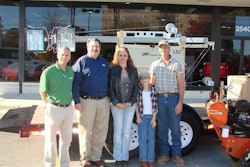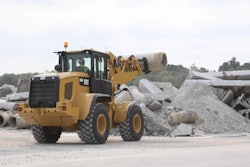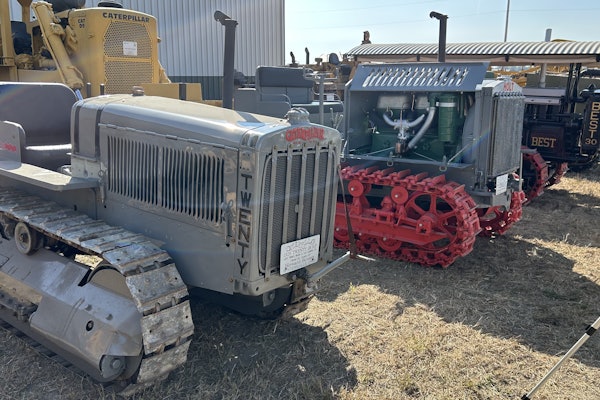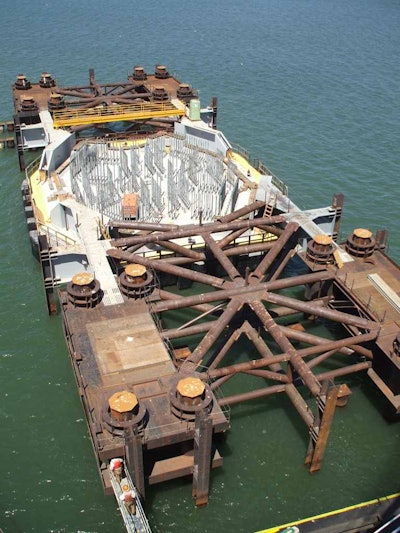 Tower D of the San Francisco-Bay Bridge during reconstruction
Tower D of the San Francisco-Bay Bridge during reconstructionThis article was contributed by Quikrete.
The historic San Francisco-Oakland Bay Bridge is a vital artery for the 280,000 vehicles traveling between the two major California cities daily.
However, by 2008, after seven decades of wear and tear, government officials had little choice but to build a new, state of the art structure.
Completed in 1936, the 8.4-mile-long Bay Bridge is located between two major fault lines, making the structure susceptible to intense seismic activity. After a 250-ton section of the eastern span collapsed during the 7.1 magnitude Loma Prieta
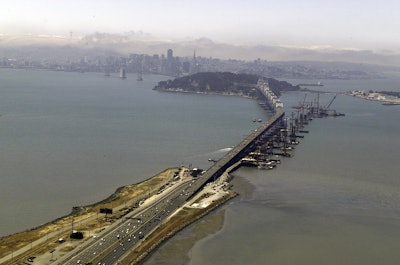 Aerial view of the bridge
Aerial view of the bridgeEarthquake in 1989, officials began planning for a new eastern span, one that incorporated modern seismic safety technologies.
The first stage of construction began in August 2008 with the building of temporary structures to support the new bridge’s falsework. The support structures were built on Yerba Buena Island in the middle of San Francisco Bay and in the bay itself. The structures will support the weight of the new bridge deck until the main cable for a self-anchored suspension (SAS) structure can be installed to hold the bridge deck.
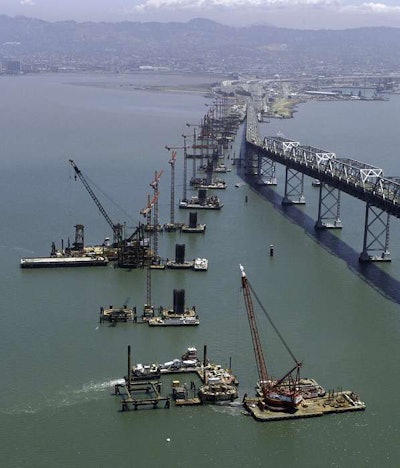 The bridge foundation pier and 17 support towers were erected as part of the San Francisco-Oakland Bay Bridge's self-anchored suspension structure.
The bridge foundation pier and 17 support towers were erected as part of the San Francisco-Oakland Bay Bridge's self-anchored suspension structure.The project’s subcontractors – a joint venture between Dutra Construction and Traylor Bros. Inc. working on behalf of the California Department of Transportation – chose Quikrete General Purpose Non-Shrink Grout and Flowcrete V.
Crews used the Quikrete products for the bridge foundation pier grouting of 17 support towers erected as part of the SAS structure.
For pile voids less than 6 inches, crews used Quickrete General Purpose Non-Shrink Grout, mixed to a fluid consistency. The grout is a high-strength, non-metallic Portland cement based material with expansive additives. Its non-shrink characteristics make it stable and capable of handling high load transfers.
The grout can be mixed to a plastic, flowable or fluid consistency and reaches 8,000 psi in a fluid consistency in 28 days. It complies with ASTM C1107 and Army Corp of Engineers CRD 621.
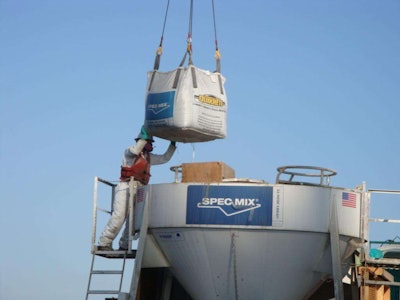 126 3,000-pound bulk bags of Quikrete General Purpose Non-Shrink Grout and 104 3,000-pound bulk bags of Flowcrete V were used on this job
126 3,000-pound bulk bags of Quikrete General Purpose Non-Shrink Grout and 104 3,000-pound bulk bags of Flowcrete V were used on this jobFlowcrete V, a flowable, shrinkage compensated, structural concrete, was used to fill the void between the inner and outer piles wider than 6 inches on the Bay Bridge project. It is designed as an original or repair concrete in situations that require a high-quality concrete with a maximum aggregate size of 10 millimeters. It can be mixed to any consistency – from stiff plastic to flowing and requires no mechanical vibration to consolidate the mix.
In total, crews on the Bay Bridge used 126 3,000-pound bulk bags of Quikrete General Purpose Non-Shrink Grout and 104 3,000-pound bulk bags of Flowcrete V.
When finished in 2013, the SAS is expected to be one of the largest structures of its kind in the world.




